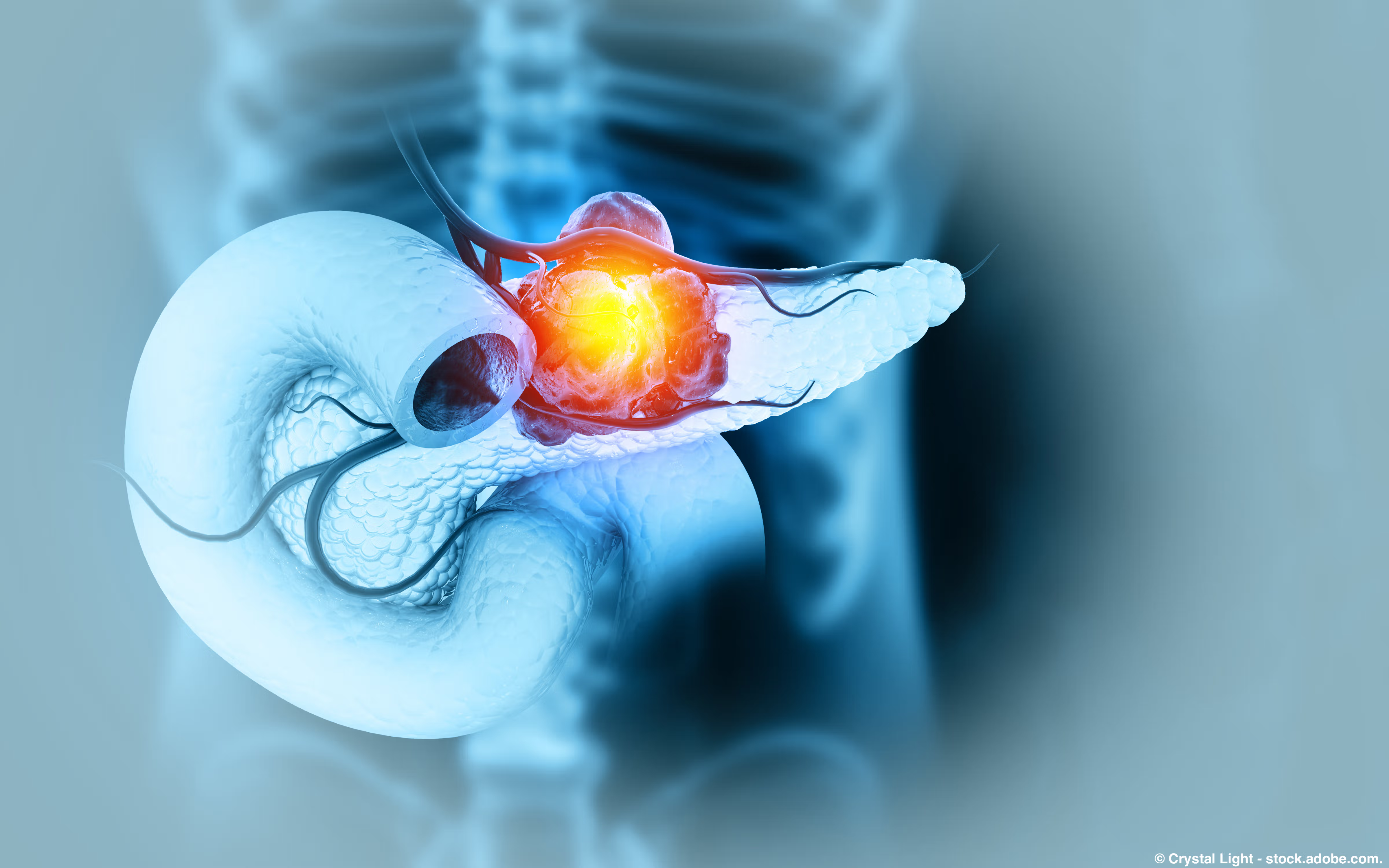Among patients with newly diagnosed metastatic pancreatic ductal adenocarcinoma (PDAC), treatment with pelareorep and modified chemotherapy consisting of FOLFIRINOX (oxaliplatin, leucovorin, irinotecan and fluorouracil) with or without Tecentriq (atezolizumab) showed an acceptable safety profile and had no new safety signals, according to data.
Results were garnered from the safety run-in portion of the ongoing phase 1/2 GOBLET study which was shared the2025 ASCO Gastrointestinal Cancers Symposium.
Glossary
Microsatellite instability–high: condition where cancer cells have many mutations in microsatellites.
Mismatch repair–deficient: a condition where errors in DNA base pairing are not routinely corrected.
Dihydropyridine dehydrogenase: an enzyme that breaks down uracil and thymine, and is involved in breaking down certain chemotherapy drugs.
Objective response rate: the percentage of patients in a clinical trial who have a partial or complete response to a treatment.
Progression-free survival: the time a patient lives without their disease spreading or worsening.
Overall survival: the amount of time a patient lives after being diagnosed cancer.
Disease control rate: the percentage of patients with advanced cancer who have a response after treatment.
All nine patients who received treatment experienced at least one side effect, with seven patients experiencing grade 3 (severe) or higher effects. A total of six patients experienced serious side effects, and three patients died after data cutoff although no deaths were determined to be related to treatment.
“Observed [side effects] were consistent with the known safety profiles of the study drugs,” lead study author Dr. Thomas Seufferlein, of the Department of Internal Medicine at Ulm University Hospital in Ulm, Germany, and colleagues, wrote in a poster. “An independent data safety monitoring board and the German regulatory authorities have approved the study to continue full enrollment. Safety of these combination therapies will continue to be monitored.”
Although only a small subset of patients with metastatic PDAC who have microsatellite instability–high or mismatch repair–deficient tumors experience efficacy with immunotherapy, previous data have suggested that the non-genetically modified reovirus pelareorep could have potential synergy with checkpoint inhibitors. Specifically, when the agent was paired with Abraxane (nab-paclitaxel), gemcitabine and Tecentriq, it elicited responses in patients with metastatic PDAC.
Cohort 5 of the open-label, multiple-cohort, phase 1/2 GOBLET study is enrolling patients with confirmed metastatic PDAC who are at least 18 years of age and are candidates to receive mFOLFIRINOX. They must have radiographically measurable disease, acceptable organ function and known low or absent dihydropyridine dehydrogenase activity. Patients could not have previously received systemic chemotherapy for metastatic disease and it could not have been longer than six months since their last dose of adjuvant chemotherapy. They also could not have prior exposure to checkpoint inhibition.
For stage 1, patients are being randomized to receive pelareorep plus chemotherapy and Tecentriq (arm A; four patients) or pelareorep plus mFOLFIRINOX (arm B; five patients). Pelareorep is administered on days one, two, eight, nine, 15 and 16; chemotherapy is given on days one and 15; and Tecentriq is given on days two and 16 of each 28-day cycle. One or both arms may be expanded to stage 2.
The primary objectives of the study include evaluating the safety and tolerability as well as the objective response rates achieved with pelareorep plus chemotherapy with or without Tecentriq. Secondary objectives include progression-free survival, overall survival, survival rates at 12 and 24 months, duration of response and disease control rate.
The three-patient safety run-in for both arms of this cohort have been enrolled and all completed the one-month evaluation period that was required.
The most common grade 3 or higher side effects to occur in both arms were nausea (44.4%), increased y-GGT (22.2%) and abdominal pain (22.2%). Serious side effects reported in all patients were nausea (22.2%), COVID-19 (20%), abdominal pain (11.1%), acute kidney injury (11.1%), diarrhea (11.1%), fatigue (11.1%), general health deterioration (11.1%), hypophysitis (11.1%), ileus (11.1%), infection (11.1%), infusion reaction (11.1%), pulmonary embolism (11.1%) and vomiting (11.1%).
“Tumor response results to pelareorep plus mFOLFIRINOX with or without [Tecentriq] therapy are pending,” the study authors concluded. “Enrollment into cohort 5 of the GOBLET study will continue —Efficacy results will be reported when available.”
For more news on cancer updates, research and education, don’t forget to subscribe to CURE®’s newsletters here.
Reference
“GOBLET Study: Results of The Safety Run-In For First-Line Metastatic Pancreatic Ductal Adenocarcinoma (PDAC) Patients Treated With Pelareorep + Modified FOLFIRINOX +/- Azezolizumab” by Dr. Thomas Seufferlein, et al., Journal of Clinical Oncology.





